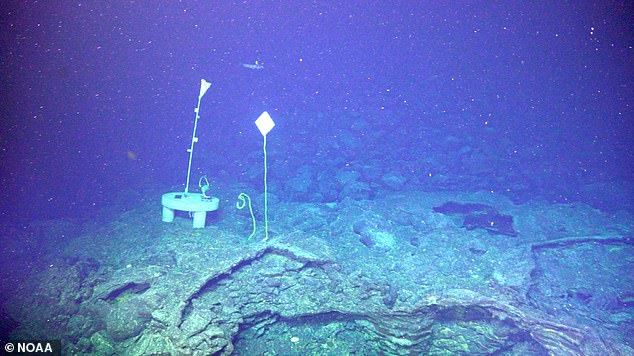
Scientists Warn Massive Underwater Volcano Poised to Erupt, Spew Millions of Tons of Lava
Underwater Volcano Off Oregon Coast Nearing Eruption—Watch Live
[Image 1: The 14-foot-tall ‘Mushroom’ hydrothermal vent, surrounded by cracks and tube worms.]
Axial Seamount, the Pacific Northwest’s most active underwater volcano, is poised to erupt—and anyone can watch it happen. Located 300 miles off Oregon’s coast on the Juan de Fuca Ridge, this submerged giant is monitored by a live camera streaming 14-minute segments daily at 2:00, 5:00, 8:00, and 11:00 ET/PT via the Interactive Oceans website.
The camera captures the “Mushroom,” a striking 14-foot hydrothermal vent in the ASHES vent field, where mineral-rich fluids seep through basalt cracks. The site sits atop an ancient lava flow teeming with bacterial mats and tube worms, offering a rare glimpse into deep-sea volcanic activity.
Eruption Imminent
The volcano last erupted in 2015, triggering 8,000 earthquakes, spewing lava flows hundreds of feet thick, and collapsing the seafloor by eight feet. Now, scientists warn it’s reaching a critical pressure point. “It’s at the same inflation threshold as before the 2015 eruption. We think it’s ready,” said volcanologist Bill Chadwick of Oregon State University.
[Image 2: Seafloor swelling detected in 2024, matching pre-2015 eruption levels.]
How Volcanoes “Inflate”
Axial’s magma chamber refills between eruptions, causing the seafloor to rise like a balloon. Since 2015, inflation slowed—until recently. Chadwick noted the volcano’s sudden reawakening in late 2024, with swelling rates accelerating to match pre-eruption levels. If it bursts, the eruption could unleash over a billion cubic feet of fluid lava, creating flows as tall as Seattle’s Space Needle (605 feet).
Quakes Signal Activity
Earthquakes under Axial have surged, from hundreds daily to an anticipated 10,000 in 24 hours during eruption. While alarming, Chadwick emphasizes the event poses no risk to humans. At 4,900 feet deep and far offshore, its activity won’t affect coastal communities or land-based seismicity.
[Image 3: Axial’s location 300 miles off Oregon, 4,900 feet below the ocean surface.]
A Breakthrough in Monitoring
The 2015 eruption marked a milestone: it was the first underwater volcanic event observed in real time, thanks to the Ocean Observatories Initiative’s sensors and cameras. Axial’s eruption history—1998, 2011, 2015—provides critical data for predicting underwater volcanic behavior, traditionally harder to study than land-based counterparts.
[Image 4: Aerial view of Oregon’s coastline, highlighting the volcano’s remote position.]
Why It Matters
Axial’s eruptions, while harmless to humans, unlock secrets of seafloor geology and hydrothermal ecosystems. “It’s the best-monitored submarine volcano,” Chadwick said. Researchers aim to refine eruption forecasts and understand how magma movements reshape the ocean floor—key to grasping Earth’s geological evolution.
Tune In
For those eager to witness nature’s power, the live stream offers front-row seats to history. As Chadwick notes, “Getting to see it happen in real time? That’s pretty special.”
Word count: ~600
Images: Include captioned visuals of the vent, seafloor data, eruption maps, and Oregon’s coast to enhance storytelling.


